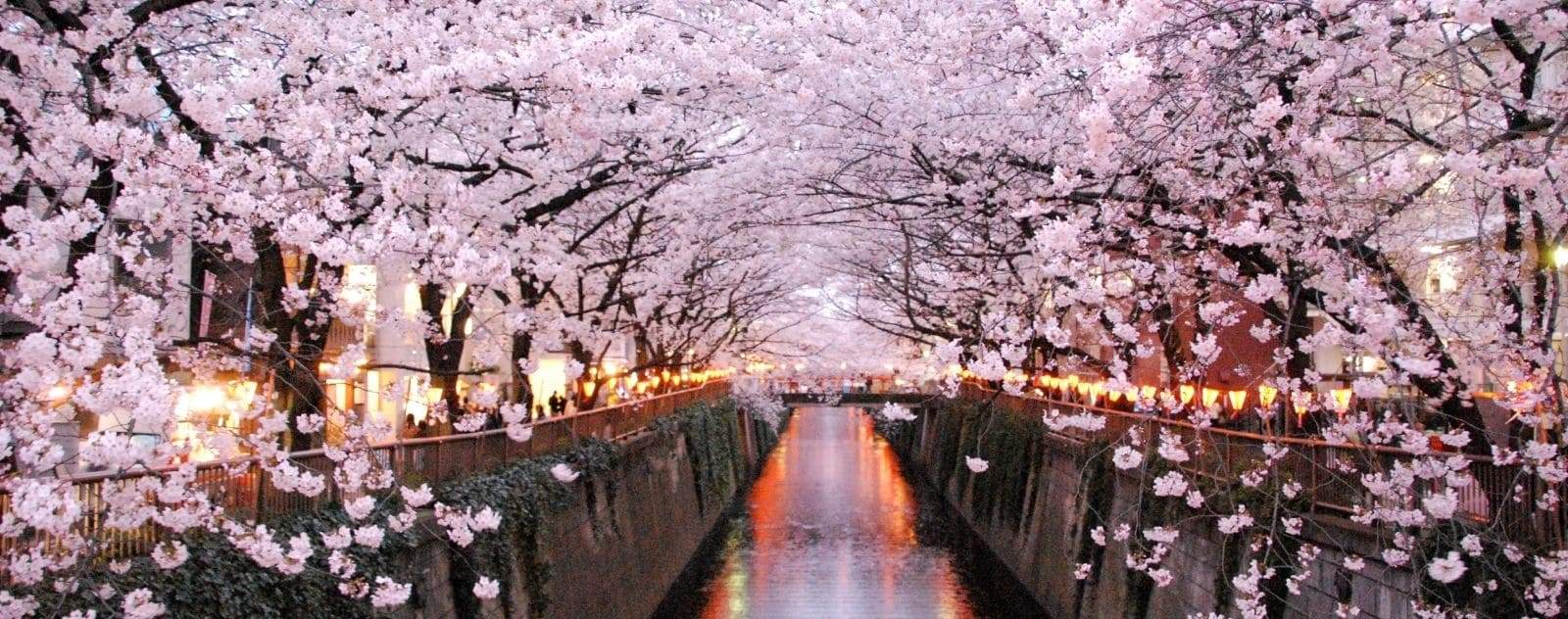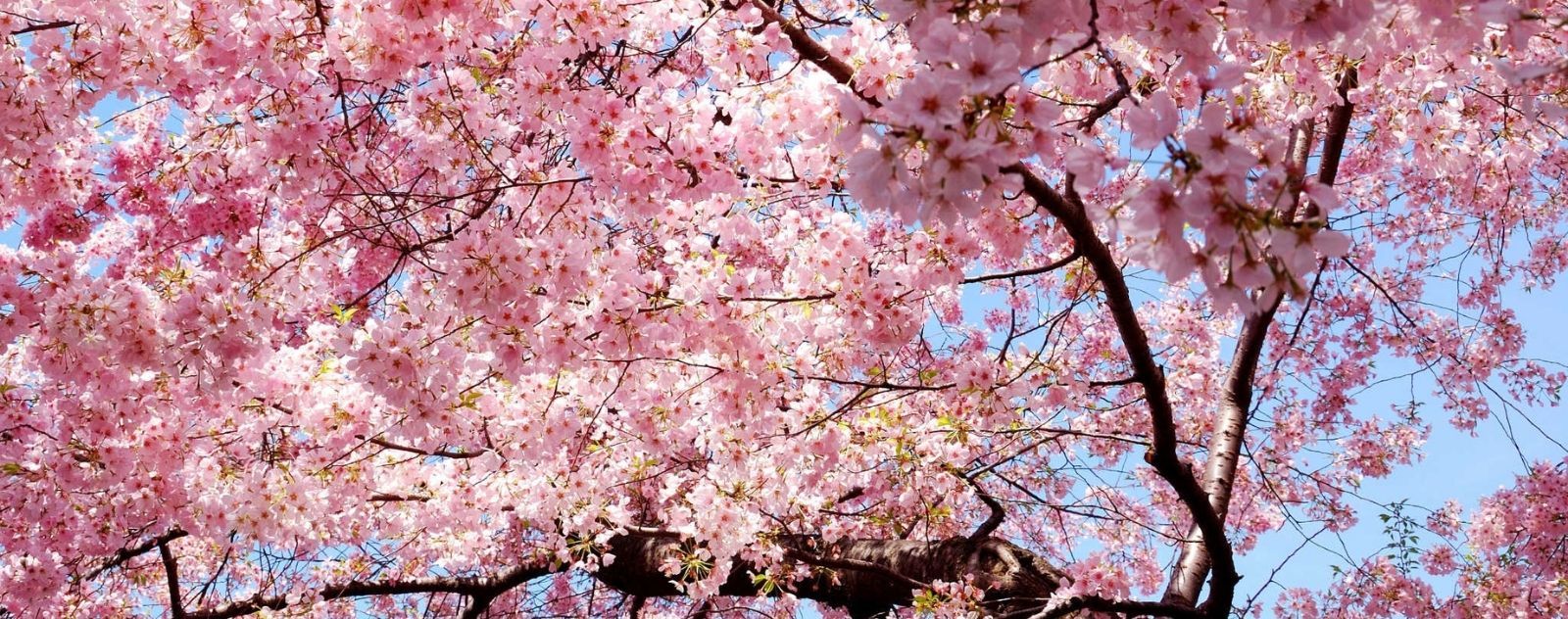17 facts to know about Sakura flowers

Sakura (cherry blossoms) carpet the Japanese landscape in spring, painting the country with their soft pink hue. These flowers are one of the country's most famous tourist attractions and are deeply rooted in Japanese culture: not only do the Japanese go out of their way to see them in full bloom (usually between the end of March and April), but these flowers have been incorporated into art and poetry, food and drink.
Indeed, the Japanese consider their brevity (many bloom for only a week or two) as a symbol of impermanence and the ephemeral nature of life. All tourists who travel to Japan in spring should take the time to observe them. To help you better appreciate them, here are 17 facts to know about sakura, Japan's most beloved flower!
1. The sakura belong to the rose family, Rosaceae

Sakura (桜) is a general name for plants that belong to the subfamily Rosaceae. The English name for sakura is cherry blossom. Sakura can be written in Chinese/kanji characters (桜), hiragana (さくら), or katakana (サクラ).
2. Somei-Yoshino is the most common variety in Japan

Somei-yoshino is a type of sakura made in Japan. Its scientific name is Cerasus x yedoensis (Matsum.) A.V.Vassil.
Somei-yoshino are growing everywhere in Japan since the Meiji period. When the media announces that the cherry blossom has started, they use Somei-yoshino as a reference. The beginning of the bloom is usually in the early spring. So it is during spring that you will be able to appreciate all the delicacy and the fragrance of these beautiful little flowers covering the cherry trees of Japan.
3. The Somei-Yoshino variety blooms for about a week
Sakura flowers bloom and die quickly. The petals of the flowers fall constantly, coloring the ground around them with a pretty carpet of white or pale pink petals. This feature is often admired and considered one of the attractions of sakura.
4. There is a name for the period when the sakura petals have all fallen off and the leaves are budding

This period is called hazakura (葉桜). It seems strange at first, as there are no Japanese cherry blossoms, yet "sakura" appears in the name. This may reflect how much the Japanese love all states of sakura trees.
5. There are more than 600 species of sakura in Japan

This number includes the original and hybrid species of Japan. The flowering cherry is known for its many varieties that influence the change of petals, the size and color of flowers, the quantity of its fruits, etc. This natural variation has also contributed to the creation of many hybrid varieties.
6. Sakura can easily rot

Sakura trees rot from cuts in their bark or roots. Once it starts to rot, the disease can easily spread to the whole tree, and die. That's why you need to be careful about where you put your sheets or blankets when you have a Hanami picnic. You could easily shorten the life of the tree. The picture above shows a sakura tree being treated to prevent rotting.
7. The oldest Sakura tree is 2000 years old

This cherry tree is called the Jindai Zakura (神代桜). The circumference of its root is 13.5m. You can see it at Jissou temple in Yamanashi prefecture.
8. The number of petals influences the name of the flower

Flowers that have up to 5 petals are called hitoe (一重). Flowers that have 5 to 10 petals are called hanyae (半八重). Flowers that have more than 10 petals are called yae (八重). The image above shows yae flowers.
9. People sit under the Sakura and celebrate

Hanami (花見) means looking at flowers, which is partly done during hanami, but mostly eating and drinking! This type of event is very popular in Japan. Hanami is also a great social event to get to know your co-workers or classmates better, since the new academic or business year starts in April, which is when the sakura trees are in bloom.
10. You can eat the petals and leaves of sakura

After the petals and leaves undergo a process called shiozuke (塩漬け), or pickling, pickles called sakurazuke (桜漬け) are produced. Sakurazuke has a distinctive aroma and is used in pastries or sweets called sakura mochi (桜餅), seen in the picture above.
Sakura mochi is a Japanese sweet, which consists of red bean curd fully or partially wrapped in pink colored mochi and wrapped in a sakurazuke leaf. Sakura mochi is often eaten during the sakura season. Sakura mochi is not the only cherry blossom-based treat!
11. You can also drink sakura flower

Put 2 or 3 of the sakurazuke flowers in a cup of hot water to make a type of tea called sakurayu (桜湯). Because the flower blooms inside the cup and is beautiful, sakurayu is often drunk at formal gatherings such as weddings.
Of course, given the prominence of sakura in Japanese society, people have come up with many different ways to incorporate the flower into food and drink.
12. Sakura are considered a symbol of grace and ephemerality

In the Japanese language of flowers, or hana-kotoba, sakura represents spiritual beauty and a good education. The flower language for the somei-yoshino variety specifically represents purity and a beautiful graceful person. The flower language for the variety yae-zakura (八重桜), called double cherry blossoms in English, is good education and grace. In other words, sakura has a positive meaning in Japanese culture.
13. The Sakura is also a symbol of new beginnings

In fact, the school and professional years begin in April, when the sakura are in full bloom. In addition, many schools plant sakura on their grounds.
14. The sakura is engraved on the 100 yen coin

This symbolizes how deeply the existence of sakura is rooted in Japanese culture. Other flowers engraved on the coins are the chrysanthemum on the 50 yen coin and the tachibana on the 500 yen coin.
15. The Japanese Self-Defense Forces use the sakura flower as their logo

The JMSDF (Japan Military Self-Defense Forces) use sakura flower logos on their rank insignia and flags. However, the sakura is not the national flower of Japan. Japan does not have an official national flower.
16. Sakura is a popular girl's name
Sakura and Sakurako (桜子) are popular girls' names in Japan. 'Ko' means child, and is often found at the end of a girl's name. The word Sakura is often associated with femininity, so there are not many boys named Sakura.
17. March 27 is the day of Sakura

This day was established by the founding of the Nihon Sakura no Kai (日本さくらの会), or Japan Sakura Association, in 1992. It has no legal power and is not a true national holiday.





Leave a comment